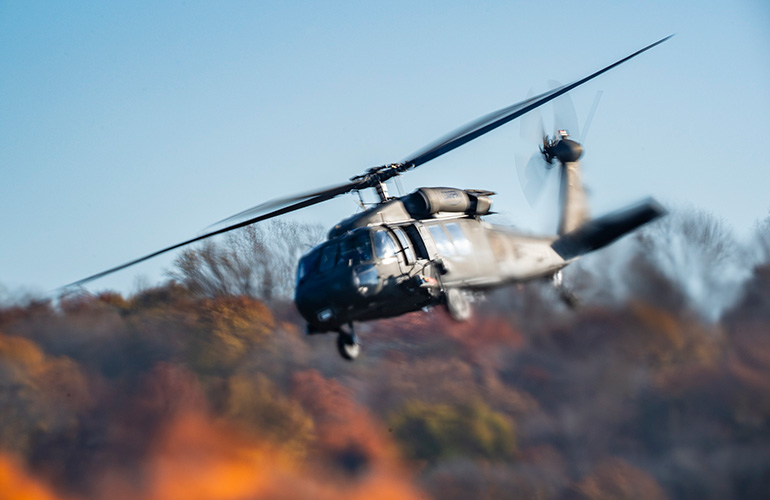|
Listen to this article |

Sikorsky’s Optionally Piloted Black Hawk helicopter equipped with MATRIX and Rain autonomy systems during fire localization and targeting demos at Sikorsky HQ in Stratford, Connecticut. | Source: Rain
Rain, a developer of aerial wildfire containment technology, and Sikorsky, a Lockheed Martin company specializing in advanced rotorcraft, are researching how to fight wildfires autonomously. The companies completed test flights in late 2023 using an autonomous helicopter that carries and dumps water onto wild fires in the very early stages.
The flight demonstration took place at Sikorsky’s headquarters in Stratford, Conn. The Optionally Piloted Black Hawk helicopter flew in autonomous mode with Sikorsky safety pilots on board.
“In 2023, in collaboration with Sikorsky, we set out to prove that we could receive an alert about a possible wildfire; send commands to launch and fly an autonomous helicopter capable of moving a large amount of suppressant to a fire’s location; then command the helicopter to accurately drop water onto the fire,” said Rain CEO Maxwell Brodie. “We are very pleased with the results that successfully demonstrate autonomous early detection and rapid response.”
Accelerating aerial response to wildfires
Rain and Sikorsky say the capabilities they’ve demonstrated can enable an accelerated aerial response to wildfires. These capabilities include:
- Integrating wildfire early detection cameras, powered by Alchera X’s FireScout AI, with automated aircraft dispatch and routing powered by rain
- An optionally piloted Black Hawk helicopter with Sikorsky’s MATRIX flight autonomy system was integrated with Rain’s wildfire mission autonomy system
- Rian’s wildfire mission autonomy system processed imagery from an ob-board high-resolution thermal camera to localize, target, and suppress the fire, directing both the aircraft’s flight path and water release timing
“By combining Sikorsky’s Matrix aircraft autonomy system with Rain’s wildfire mission autonomy capability, we have shown the potential to put out a wildfire in its initial stage before it becomes a huge problem,” said Igor Cherepinsky, director of Sikorsky Innovations.
Rain says the fully integrated system performed end-to-end autonomous wildfire response. This includes early detection, dispatch, route planning, preflight, takeoff, flight, Bambi bucket operations, targeting, suppression, and landing.
Moving forward, Rain says it will continue to expand its engagement with fire agencies to integrate autonomous systems into operations and enhance safety for responders and the community. The company says it’s looking forward to advancing capabilities for autonomous firefighting in collaboration with Sikorsky.
“Ultimately, Rain envisions equipping fire agencies with the capability to strategically position a future fleet of firefighting helicopters capable of receiving and carrying out mission commands to autonomously suppress a wildfire in its earliest stage,” Brodie said.





